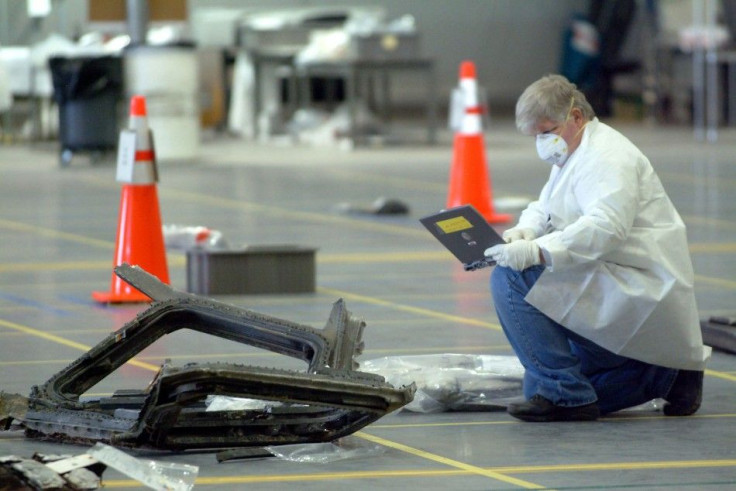Did a Texas Drought Uncover Space Shuttle Columbia Wreckage, Debris?

A 1m-wide spherical tank, which was part of the ill-fated orbiter Space Shuttle Columbia's electrical power system and contained liquid hydrogen or oxygen, was found in Lake Nacogdoches, near the Texas town of the same name where much of the debris initially fell.
Greg Sowell, a police sergeant in the city of Nacogdoches, about 160 miles northeast of Houston, said the falling levels of Lake Nacogdoches revealed an unexpected object.
"We found a large, about four foot diameter, round, what appears to be a tank of some sort," Sowell said. "We have reason to believe this may be a part of the Columbia Space Shuttle."
Columbia broke apart upon re-entry into the atmosphere on Feb. 1, 2003, killing the seven crew members on board. Debris from the spacecraft, which disintegrated over a wide area of east Texas, has been found in some 2,000 locations across eastern Texas and western Louisiana, including in Nacogdoches.
"Due to the drought, Lake Nacogdoches is at an approximately nine-foot low," he said. "There has been an unusually large area of the lake which is normally underwater which has been exposed."
Nasa said about 40 percent of the orbiter had been recovered after the record drought has gripped Texas.
"It had been out of the water for some time," Nacogdoches police sergeant Greg Sowell told the Associated Press. "It had been seen by local sportsmen... People didn't know what they were looking at."
Local authorities will arrange to ship the tank back to the Kennedy Space Center, where other Columbia wreckage has been collected for analysis.
The Columbia shuttle broke up in the skies over eastern Texas in February 2003, killing all seven of its crew. The heat shield that protects the shuttle from the searing heat of re-entry was damaged on liftoff by a piece of insulating foam that broke away from an external fuel tank.
© Copyright IBTimes 2024. All rights reserved.





















